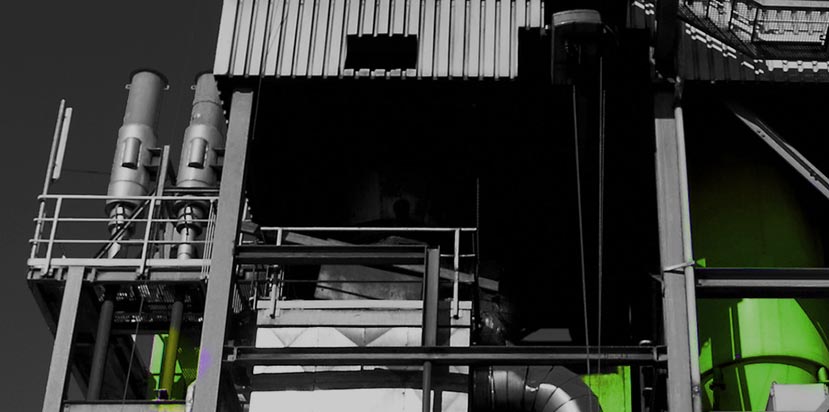
Thanks to the consistent development of the thermal gasification demonstration-plant, it is now possible to use - additionally to wood - other homogenous, carbonic feedstock and residues to generate different forms of Energy. For example plastics, tires, coal, sewage sludge, etc. Therefor a new pilot plant is going to be built in the region of Guessing by the ISG Energy GmbH. This pilot plant is on one hand going to demonstrate the technology to future customers and on the other hand serve for further research projects, further steps of optimization and as a test plant for feedstock variations, according to customer requirements. Since austrian Universities - on top the University of Technology Vienna - have their permanent site in the research center in Guessing, the accompanying research during the operation of the plant is ensured.
For the marketing, the European Center for renewable Energy already implemented the thermal gasification technology into their energy strategy program and the Polygeneration system is already showcased europe-wide. A great number of visitors in Guessing proof the huge interest. Due to this huge interest we expect to build many of our Polygeneration plants in Europe in the next couple of years and to proof the supremacy of our technology.
The gasification process on the principle of duel-fluidized bed, which was developed by the Vienna University of Technology, under the guidance of professor Hermann Hofbauer has many benefits for decentralized energy production compared to classical systems:
The by Prof. Hofbauer developed technology is the world´s first functioning FICFB (Fast Internally Circulating Fluidized Bed) plant, and has been operating commercially for 10 years. The core of the plant are the two inter-connected fluidized bed systems of the fluidized bed steam gasifier (reactor): the gasification zone and the combustion zone. In the gasification zone cut-up biomass circulates and is rapidly gasified in anaerobic conditions at approx. 850°C with superheated steam. The bed material (olivine sand) functions as a heat transfer medium and provides a stable temperature in the reactor.
In the next step the resultant producer gas is cleaned and cooled. The heat emitted during cooling is used for the generation of district heat. Subsequently, the gas is filtered, and tar scrubbed with bio-diesel. In this specialized process all resulting residual materials are recycled. The gas purification produces neither solid waste nor waste water, and the producer gas is completely free from nitrogen. Fluidized bed steam gasifiers work extraordinarily reliably and regularly (7,000-8,000 operating hours per year) and are considered state-of-the-art (Best Available Technology).
Producer gas can be used in multiple ways. A downstream engine optimized for gas operation can use it to produce electric power and heat (combined heat and power, CHP), with the overall efficiency being higher than 85%. In a methanization plant synthetic natural gas (BioSNG) can be generated from it in certifiable quality. Using Fischer-Tropsch synthesis high-grade-fuels can be synthesized from the producer gas. Its hydrogen content of up to 40% could also be extracted.
The thermal gasification plant is in use minimum 7.000 hours per year. The plant allows waste materials rich in hydrocarbon to be used as feedstock for gasification. Alternative to wood, the high caloric value fractions from the mechanical-biological treatment of domestic waste, domestic-waste- like industrial waste, dried sewage sludge, dried algae and the like can be used as feedstock. The use of non-recyclable waste to produce energy is becoming increasingly interesting for communities, as waste management already presents an enormous logistic and financial burden. This is only expected to increase in the future.
Campaign TERRAwatt 2018. Deploying One Terawatt for our Terra.
Get Started Now